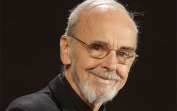Jesuit priest, Father John Kavanaugh, reflects on the words of St. Paul in today’s readings from I Corinthians. He writes,
“St. Paul advises radical detachment from every cherished good. Business, family, feelings - all indeed lovely, all messages from God’s bounty - but none of them is God’s very self. Not one of these lavish gifts is the giver.”
 This echoes the ideas of Francis deSales (whose January 24 Feast Day we recently celebrated by the way) who says that we are to “Seek NOT the gifts of God, but rather the God of the gifts.”
This echoes the ideas of Francis deSales (whose January 24 Feast Day we recently celebrated by the way) who says that we are to “Seek NOT the gifts of God, but rather the God of the gifts.”
******
Across all denominations, churches are beginning to ask if what they are doing is truly “effective.” This is not being done so much in terms of any “success model” or “prosperity Gospel” but out of a sincere scriptural concern of fulfilling the command of Jesus in Matthew 6:33: to “Seek the Kingdom of God above all else, and live righteously, and he will give you everything you need.” It also involves the concern that if the church does NOT do the Lord’s will, what is done will ultimately fail as we read in Psalm 127:1: “Unless the LORD builds the house, the builders labor in vain. Unless the LORD watches over the city, the guards stand watch in vain.”
And so, there has been some interesting church research recently coming out of evangelical/protestant circles (which is being corroborated by Catholic studies by the way) that what churches are doing, even highly  successful churches, might not be building their churches and congregations and church activity on “rock” but “on sand.” (See Luke 6:46-49)
successful churches, might not be building their churches and congregations and church activity on “rock” but “on sand.” (See Luke 6:46-49)
For example, in the Catholic Church, success has typically been determined by two words: “How Many” or “How Much.”
- How many Baptisms?
- How many weddings?
- How many children confirmed?
- How many students in your school?
- How much in your weekly collection?
- How many people in your pews?
- How “busy” is your parish?
Certainly this is an “indication” on the wellness of the church.
 Numbers can be helpful, but they don’t reveal the whole story. Numbers can’t peer into the human heart. When it comes to personal spiritual growth, we need to be able to measure more than numbers. We need a glimpse of people’s attitudes, thoughts, and practices. In other words, we’re looking into the “human heart.” (From Amazon review of Reveal - Where Are You? By Greg L. Hawkins And Cally Parkinson)
Numbers can be helpful, but they don’t reveal the whole story. Numbers can’t peer into the human heart. When it comes to personal spiritual growth, we need to be able to measure more than numbers. We need a glimpse of people’s attitudes, thoughts, and practices. In other words, we’re looking into the “human heart.” (From Amazon review of Reveal - Where Are You? By Greg L. Hawkins And Cally Parkinson)
*****
The FIRST most important finding of this research has been: Individual church activity does not predict - nor does it help to grow – the long-term spiritual growth of a person. And, just because you have a lot of people in a super-busy-mega-church does not mean that those people are growing spiritually or in their relationship to Christ.
The research also shows that “faith life” or “personal spirituality” or “spiritual growth” is never static – it can move and develop and progress and regresses throughout a person’s life. And so the SECOND finding is that spiritual/religious people move along some kind of spiritual continuum and that this continuum can be broken out into various phases, or stages. Some examples:
- Exploring Christ: Getting to Know Those Who Are Searching for God
- Growing in Christ: Getting to Know Those Who Are Open to God
- Close to Christ: Getting to Know Those Who Are on Personal Terms with God
- Christ-Centered: Getting to Know Those Who Are Surrendered to God.
In the Roman Catholic world, this corresponds to Catholic author and lecturer Sherry Weddell’s “5 Thresholds” of spiritual growth found in her book, Forming Intentional Disciples:
- Initial Trust
- Spiritual Curiosity
- Spiritual Openness
- Spiritual Seeking
- Intentional Discipleship
******
Now, I know that there will be the skeptics out there who will say:
- Father, you can’t measure this stuff!
- The kingdom of God and its “time of fulfillment” are not tied to human configuration or chronological time; they are the timeless reality of God’s saving presence.
The counter to this is as follows: the idea of some type of spiritual continuum is nothing new. This is classic Catholic spirituality. Take, for example, St. Teresa of Avila speaks of the “7 Mansions:”
- The First Mansion: The Human Soul.
- The Second Mansion: War.
- The Third Mansion: Fear of God & Aridity in Prayer
- The Fourth Mansion: Sweetness in Prayer, Divine Consolations and the Prayer of Quiet
- The Fifth Mansion: The Prayer of Union and Spiritual Espousal
- The Sixth Mansion: Preparation for Spiritual Marriage and The Wound of Love
- The Seventh Mansion: God’s Chamber and Spiritual Marriage
*****
Ok, what’s the significance of this to today’s Second Reading from St. Paul? In his book, The Soul of the Apostolate, Cistercian Monk, Dom Chautard, addresses the connection between ACTIVITY and SPIRITUALITY.
Dom Chautard demonstrated that any and all apostolic work – any “church activity – MUST be rooted in an interior, spiritual life. The apostle of Christ will grow to become an instrument and true channel of God’s graces to the world only through prayer, meditation and the cultivation of the Interior Life (From Amazon review of Soul of the Apostolate by Dom Chautard).
The problem is that people focus on objects that are ONE STEP REMOVED from the TRUE OBJECT. They focus on the spiritual program or on the parish or on the homily or on the faith sharing group or on the pastor or the book and not directly on their own personal relationship with Jesus Christ and what must be done to totally focus on that. Everything else are just instruments or entertainment or therapy. Any focus on anything else is building your spiritual house on sand.
This is important to a parish because, across the country, there has been visible growth in churches that offer an “entertainment church model” involving big bands, modern music, big screens, dynamic preaching, every conceivable ministry. They have been seen as “successful” in terms of their size, the speed of their growth and the amount of programs and activities offered. Other congregations are asking pastors why can’t such an approach be implemented in their own church. The research is showing that such an approach is successful – and obviously highly successful - BUT ONLY for people in the initial spiritual phases or mansions. As a believer moves along the spiritual path, such an approach or church model not only fails to feed them, it can actually drive them away as witnessed by mega-churches that are seeing up to 50% of their congregation spiritually disenchanted and significant number leaving. As one mega-church pastor commented, “We have a very large ‘front-door;’ but we also have a huge ‘back-door’ as well.”
*****
OK, practically speaking, what do we all do now? Each of you receives subtle messages - the whispers of God – and you receive them on a day-to-day basis. Some suggestions:
- Read this weeks passage from St. Paul’s First Letter to the Corinthians 7:29-31. Just read it. Read it again. See what thoughts pop into your head. Ask God and yourself the question when the thoughts come, “OK, what does that thought mean?”
- If there was something about this homily that you found intriguing, click on the hyperlinks above or do some research on one of the topics discussed. Sit quietly with your thoughts in prayer. See where your thoughts and prayers take you.
- For those of you who would like to take this “detachment” thing to a more advanced level, try this approach suggested to me once by a Jesuit priest:
- Take one segment of your life (books, cloths, toys, sporting goods, music, something…)
- Look at them. Examine them closely.
- If there are any objects there, upon which you have NOT PHYSICALLY PLACED YOUR HAND over the past 2 years:
- Sell them. Give them away. Throw them out.
You obviously don’t “need” them anyway.
**********************
Audio version of the homily is here:
